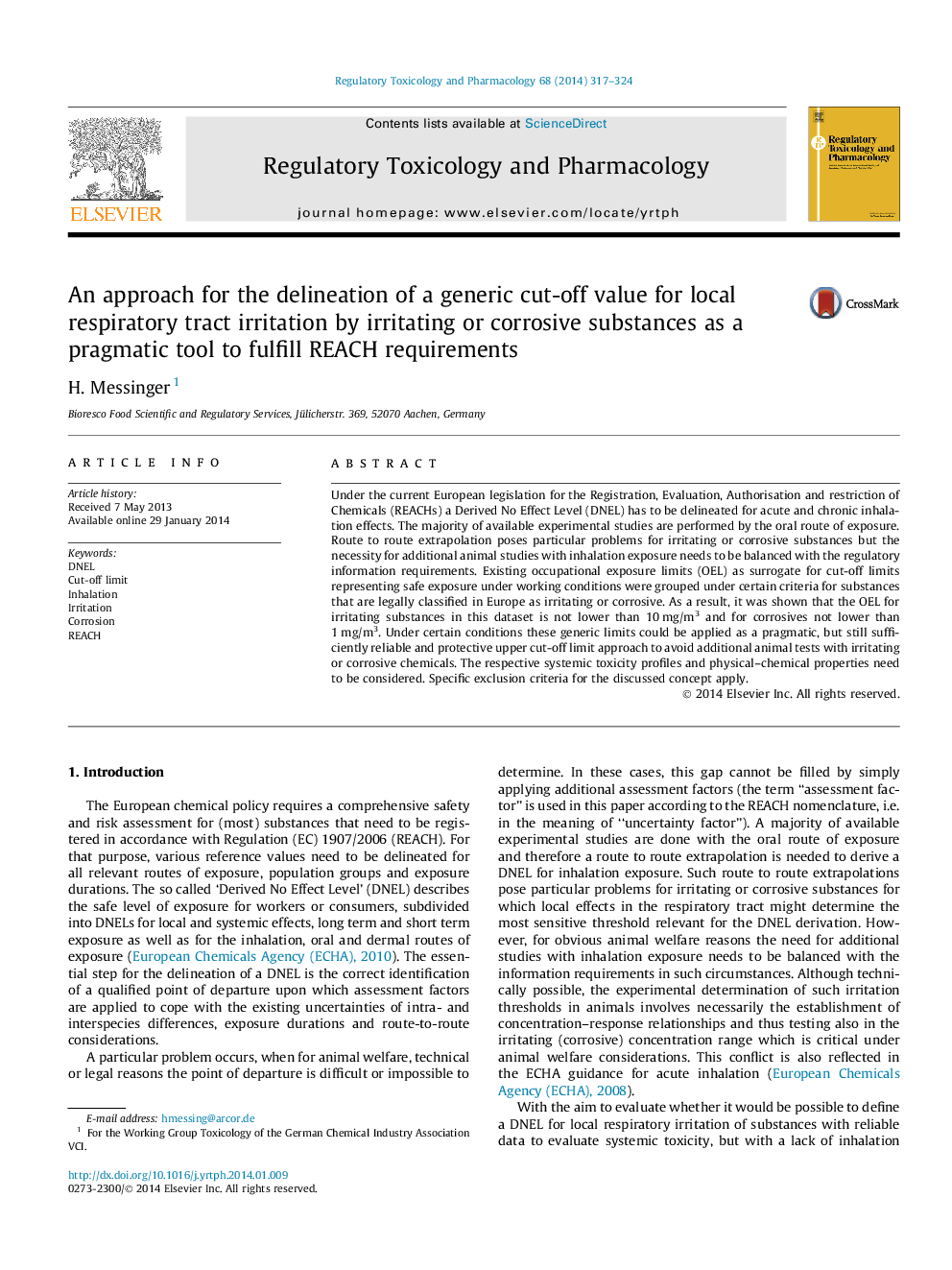| کد مقاله | کد نشریه | سال انتشار | مقاله انگلیسی | نسخه تمام متن |
|---|---|---|---|---|
| 5857168 | 1131995 | 2014 | 8 صفحه PDF | دانلود رایگان |
عنوان انگلیسی مقاله ISI
An approach for the delineation of a generic cut-off value for local respiratory tract irritation by irritating or corrosive substances as a pragmatic tool to fulfill REACH requirements
دانلود مقاله + سفارش ترجمه
دانلود مقاله ISI انگلیسی
رایگان برای ایرانیان
موضوعات مرتبط
علوم زیستی و بیوفناوری
علوم محیط زیست
بهداشت، سم شناسی و جهش زایی
پیش نمایش صفحه اول مقاله

چکیده انگلیسی
Under the current European legislation for the Registration, Evaluation, Authorisation and restriction of Chemicals (REACHs) a Derived No Effect Level (DNEL) has to be delineated for acute and chronic inhalation effects. The majority of available experimental studies are performed by the oral route of exposure. Route to route extrapolation poses particular problems for irritating or corrosive substances but the necessity for additional animal studies with inhalation exposure needs to be balanced with the regulatory information requirements. Existing occupational exposure limits (OEL) as surrogate for cut-off limits representing safe exposure under working conditions were grouped under certain criteria for substances that are legally classified in Europe as irritating or corrosive. As a result, it was shown that the OEL for irritating substances in this dataset is not lower than 10Â mg/m3 and for corrosives not lower than 1Â mg/m3. Under certain conditions these generic limits could be applied as a pragmatic, but still sufficiently reliable and protective upper cut-off limit approach to avoid additional animal tests with irritating or corrosive chemicals. The respective systemic toxicity profiles and physical-chemical properties need to be considered. Specific exclusion criteria for the discussed concept apply.
ناشر
Database: Elsevier - ScienceDirect (ساینس دایرکت)
Journal: Regulatory Toxicology and Pharmacology - Volume 68, Issue 3, April 2014, Pages 317-324
Journal: Regulatory Toxicology and Pharmacology - Volume 68, Issue 3, April 2014, Pages 317-324
نویسندگان
H. Messinger,